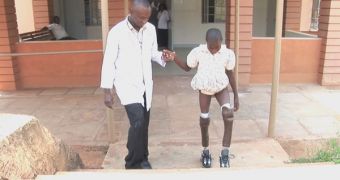Medicine and healthcare are an area where 3D printing technology caught on really fast, and it's not so hard to understand why, when things like prosthetics are made.
And prosthetics are precisely what field workers from the University of Toronto and the Christian Blind Mission (CBM) are making for Ugandan children.
Well, that's not a perfectly accurate thing to say. The field workers aren't actually making the things.
Instead, they are taking 3D scans of those in need of prosthetic limbs and sending the information to the Uganda CoRSU Hospital.
It is that hospital that 3D prints prosthetics, and it takes less than 24 hours for one to be completed.
Normally, it would take a highly trained technician to make a prosthetic, but current demand would only be met if 40,000 of them suddenly popped up, which can't happen.
In fact, the World Health Organization (WHO) doubts that more than 18,000 will be trained in the next 50 years.
The 3D printed prosthetics will not remove the need for technicians, but they are still much better than nothing. Also, patients only need to go to the hospital to get their prosthetic and learn how to use it. No long-term consultations and adjustments are needed before their artificial limb is ready for use.

 14 DAY TRIAL //
14 DAY TRIAL //